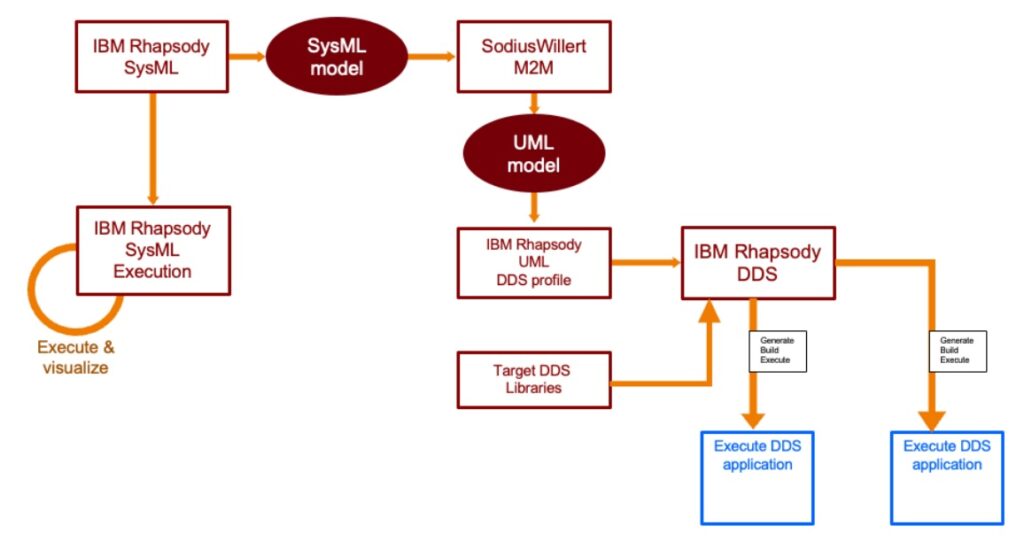MESCONF – Modeling Embedded Systems
Worum geht es bei der MESCONF?
Embedded Systeme sind allgegenwärtig; ein Alltag ohne diese intelligenten kleinen Helfer kaum noch vorstellbar. Wie man Embedded Systeme so baut, dass sie zuverlässig das tun, was erwartet wird, das steht bei der MESCONF im Mittelpunkt. Dabei betrachten wir insbesondere, wie Modelle helfen können, Architekturen, Systeme und Software zu entwickeln und zu verfeinern.
Warum solltest Du teilnehmen?
Der oft beschworene “Blick über den Tellerrand” kann
überraschende und wertvolle Anregungen bringen, wie
die eigene Projektarbeit verbessert werden kann.
Deshalb steht der Austausch von praktischen
Erfahrungen in konkreten Anwendungsbeispielen bei der
MESCONF im Vordergrund. Anwender berichten aus
ihren Projekten, und es gibt viel Raum, sich über das
Gehörte, eigene Ideen, Erfahrungen und Erwartungen im
persönlichen Gespräch auszutauschen.
Format der MESCONF
- Fachvorträge
- Diskussionsrunden
- Workshops der Toolhersteller
- Fishbowl
Warum gibt es die MESCONF?
Ganz einfach: weil Embedded Systeme heute derart komplexe Aufgaben
lösen, oft auch im Verbund, dass die Entwicklung extrem aufwendig
werden kann. Fehler werden spät entdeckt; deren Beseitigung ist
kompliziert und kann zu unerwünschten Seiteneffekten führen, und am
Ende laufen Kosten aus dem Ruder, und Liefertermine werden verpasst.
Visuelle Hilfsmittel wie Bilder sind hilfreich; noch besser sind Modelle!
Weil die Symbole eindeutig sind und nicht falsch interpretiert werden
können. Modelle können in Entwicklungstools bearbeitet werden, was
viele Entwicklungsaufgaben erleichtert.
Inhalte können überprüft werden, Source-Code, Dokumente und andere
Artefakte generiert werden, mit Hilfe von Simulationen können
Unstimmigkeiten frühzeitig aufgedeckt oder ausgeschlossen werden.
Missverständnisse werden minimiert, viele mögliche Fehlerquellen sind a
priori ausgeschaltet.
Was kann Modellierung konkret leisten und was ist dabei zu
berücksichtigen? Das „Modeling Manifest“ (http://mdse-manifest.org)
einer Gruppe von Experten ist ein guter Einstieg. Jedoch: was sich darin
einfach liest und logisch anhört, ist in der Praxis nicht in jedem Projekt
exakt so umsetzbar, und es stellen sich immer wieder neue Fragen.
Und genau deshalb gibt es die MESCONF, fokussiert auf diese Thematik.
Am 22. und 23. Mai 2025 treffen sich Experten und Anwender, um „Best
Practices“ auszutauschen, Ideen und Fragen zu besprechen und neue
Erkenntnisse zu gewinnen.
Rückblick auf die MESCONF 2024
Fachvorträge MESCONF 2024 (Auswahl)
- Funktionsorientierte Entwicklung mit MBSE und Potentiale für den Einsatz von AI
Jochen Epple, Mercedes-Benz, Anuschka Gummel, BHC - Game Changer SysML v2 und AI
Tim Weilkiens, oose - Guided System Modeling und Übergang in die SW und E/E Domäne
Johannes Trageser, SodiusWillert - SysML v2 in der praktischen Erprobung
Samir Sarkic, Bosch
Workshops MESCONF 2024
- Infineon: Model-Based Design (MBD) and Automated Code Generation
- Mathworks: System Architecture Modeling of an Electric Vehicle with MathWorks Toolchain
- Incquery: Model Governance für das Digital Engineering der Zukunft: IncQuery Validator Product Launch
- IBM: Einstieg in die Modellbasierte Entwicklung – Welchen Einfluß hat die neue SysML v2 auf etablierte MBSE Methoden?
Auszug aus den Diskussionsrunden MESCONF 2024
- AI-Assisted MBSE
- Model-based requirements engineering
- Text vs. Grafik aus Anwendersicht
- Reviewing models — review management, results management, results documentation
- Requirements in the loop — Verifikation von Anforderungen durch Formalisierung
- Product-line engineering — ab wann sinnvoll, wo anfangen?
- Impact analysis in models — how to make it work
- Das Problem mit den UML-Komponenten in IBM Rhapsody
Hier gehts zur Agenda 2024
Ich hoffe viele von euch zu sehen auf der MESCONF!
Walter van der Heiden (walter@sodiuswillert.com)



